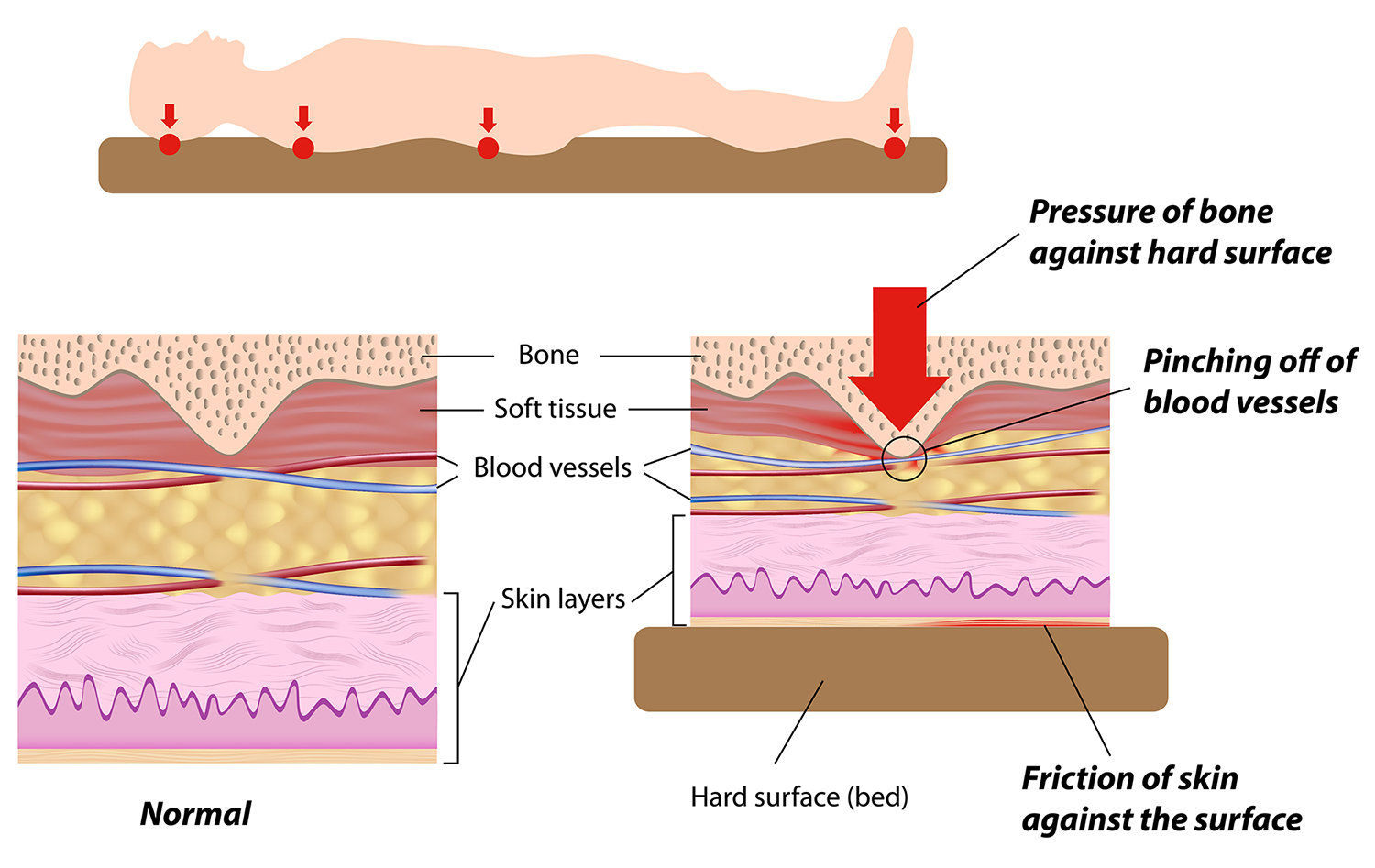Unfortunately, preventable pressure sores occur too often in nursing homes. A pressure sore, also known as a bedsore, pressure ulcer, or decubitus ulcer, is an injury to the skin and underlying tissue that usually occurs over a bony area due to constant pressure or pressure combined with friction. Pressure sores often form in the elderly or disabled when restricted movement puts continuous pressure on specific body areas such as the head, shoulder blades, buttocks, hips, and heels. This leads to restricted blood circulation, causing the tissue to
die and pressure sores to form.

Nursing home residents often suffer from mobility, sensory, activity, and/or nutritional impairments, leaving them more susceptible to pressure sores. If existing impairments are not addressed with preventative measures such as regular skin inspections, the use of cushions to offload pressure, or regular turning and repositioning, pressure sores can develop.
Ask the nursing home what plan is implemented to prevent pressure ulcers. Make sure it is being followed by asking questions and regularly checking your loved one for any signs of early skin breakdown, which can include unusual changes in skin color or texture, swelling, pus-like draining, tender areas and/or an area of the skin that feels cooler or warmer to the touch than other areas.
Stages of a Pressure Sore
Stage 1: The bedsore is a small red spot surrounded by a larger rash-like reddened area.
Stage 2: The sore is now opened and presents as a blister or scraped area.
Stage 3: The wound is now cratering into the fat layer underneath the skin.
Stage 4: The wound is very deep and craters into the muscle and bone.

What to do if a Pressure Sore is Detected
If you have been told that your loved one has a pressure sore, verify it is being properly treated to prevent the sore from becoming more extensive and deeper. Immediate treatment is necessary because pressure sores, while sometimes painful and debilitating, also create susceptibility to infection and can undermine rehabilitative therapies.
After verifying that proper treatment is provided, ask the nursing home or other medical providers to photograph the sores and place the photographs in your loved one’s medical record. If photographs aren’t being taken by the nursing home or other medical providers, make sure you begin taking photographs on a regular basis until the pressure sores heal.
Pressure sores are frequently preventable and should never occur. Failure to prevent the development of pressure sores can constitute negligence and a violation of New York State regulations. Please click here for more information on how Rochester pressure sore lawyer John Wells defended a pressure sore victim. If your loved one develops a severe pressure sore, please contact John Wells for a free consultation.




